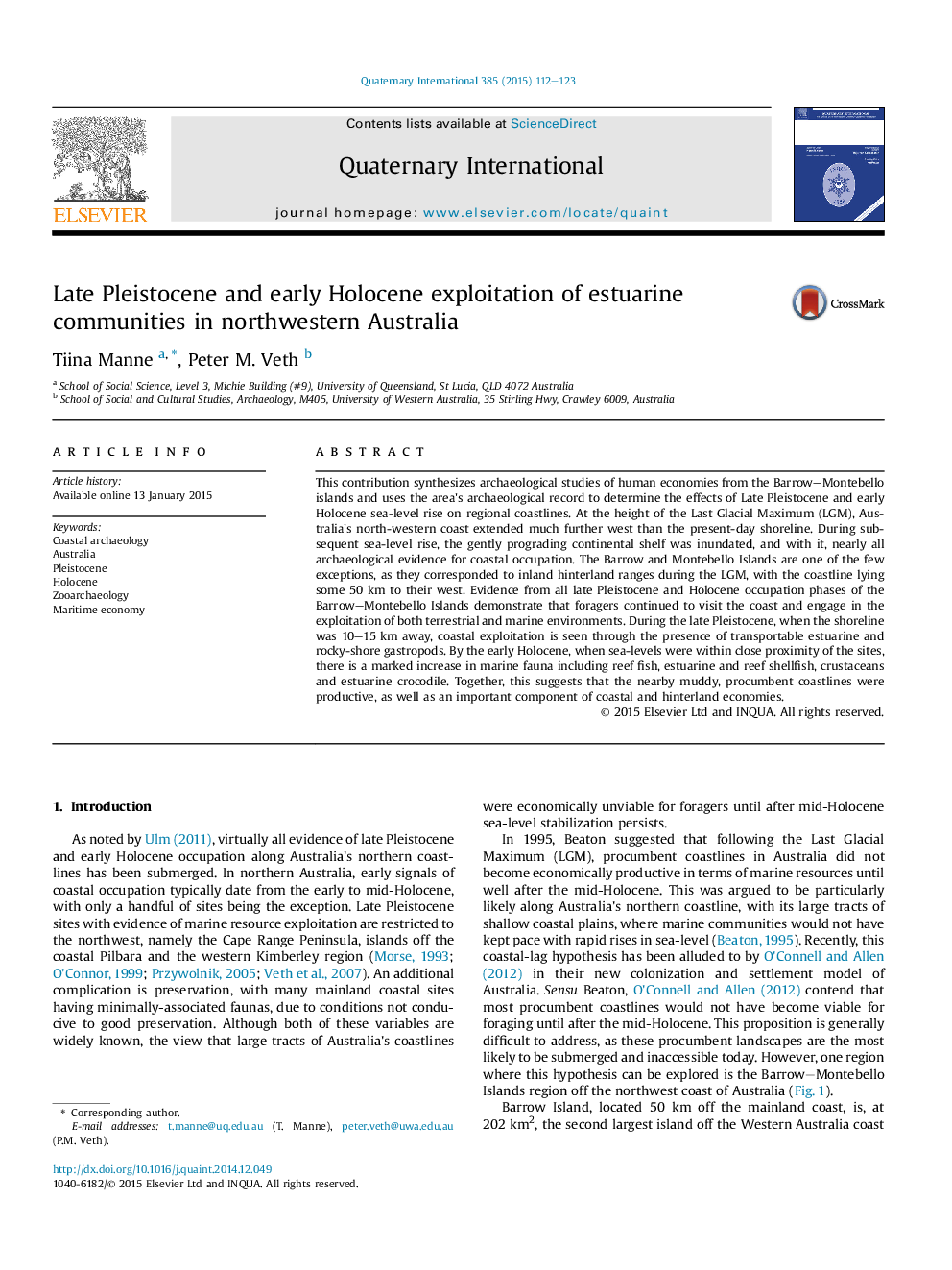| کد مقاله | کد نشریه | سال انتشار | مقاله انگلیسی | نسخه تمام متن |
|---|---|---|---|---|
| 1040435 | 1484113 | 2015 | 12 صفحه PDF | دانلود رایگان |
This contribution synthesizes archaeological studies of human economies from the Barrow–Montebello islands and uses the area's archaeological record to determine the effects of Late Pleistocene and early Holocene sea-level rise on regional coastlines. At the height of the Last Glacial Maximum (LGM), Australia's north-western coast extended much further west than the present-day shoreline. During subsequent sea-level rise, the gently prograding continental shelf was inundated, and with it, nearly all archaeological evidence for coastal occupation. The Barrow and Montebello Islands are one of the few exceptions, as they corresponded to inland hinterland ranges during the LGM, with the coastline lying some 50 km to their west. Evidence from all late Pleistocene and Holocene occupation phases of the Barrow–Montebello Islands demonstrate that foragers continued to visit the coast and engage in the exploitation of both terrestrial and marine environments. During the late Pleistocene, when the shoreline was 10–15 km away, coastal exploitation is seen through the presence of transportable estuarine and rocky-shore gastropods. By the early Holocene, when sea-levels were within close proximity of the sites, there is a marked increase in marine fauna including reef fish, estuarine and reef shellfish, crustaceans and estuarine crocodile. Together, this suggests that the nearby muddy, procumbent coastlines were productive, as well as an important component of coastal and hinterland economies.
Journal: Quaternary International - Volume 385, 22 October 2015, Pages 112–123
